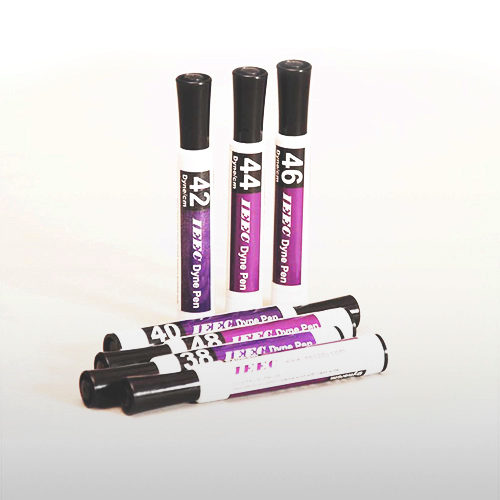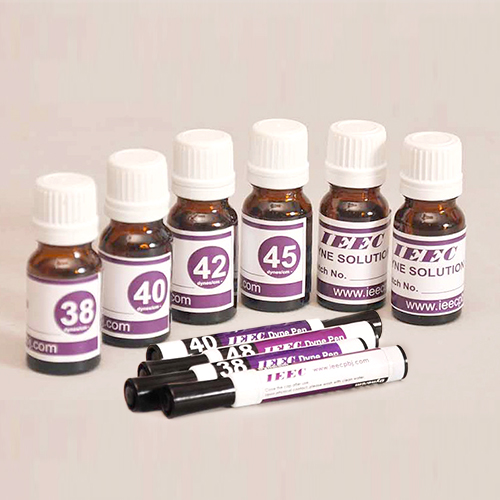PROCEDURE FOR DYNE TESTING
Dyne pens and dyne solution are used to determine the surface energy of a plastic substrate after surface treatment. The surface energy is measured in dynes/cm and is one of industries accepted methods to determine the level of surface treatment the substrate has acquired. This is often refered to as “wettability” (hydrophilic) or “non-wettability” (hydrophobic) properties.
This method is in common use for estimating the treatment level of plastic surfaces in manufacturing/production environments. It involves using solutions made from a mixture of two chemicals that produce liquids (dyne) with surface tension in the range of 30–70 dynes/cm. This method is subjective, but it provides a rapid means of assessment of the treatment level, particularly useful in a production environment.
Dyne Testing Solutions
Spread the test fluid from the felt tip pen or from the Dyne Solution bottle using cotton Swab lightly over an area of approximately 7 cm of the test specimen, noting the time it takes for the continuous film of ink to break into droplets.
Breaking of the fluid into droplets in less than 2 seconds indicates a lack of wetting and a lower numbered test fluid should be tried.
If the fluid remains intact for longer than 2 seconds, a higher numbered test fluid should be tried.
The aim is to establish the lowest reading at an optimum dwell time of 2 seconds.
Extreme care must be taken to ensure the film surface is not touched or contaminated in the areas in which the tests are to be made.
We recommend the replacement of the inks regularly if the bottled inks are frequently opened to atmosphere.
If bottled inks are exposed to the air on a daily basis: dispose of remaining inks after 3 months.
If bottled inks are exposed to the air on a weekly basis: dispose of remaining inks after 6 months.
If bottled inks are exposed to the air on a monthly basis: dispose of remaining inks after 6 months.
Note:
Disposal of dyne solutions is typically a locally regulated function. We recommend you contact your local municipality, or disposal service to learn how to properly dispose of any expired dyne solution.
While IEEC Power Electronics Pvt. Ltd. believes the information contained herein is factual and the options expressed are those of qualified experts, this information is not to be taken as a warranty for which PBJ - Industrial Electronics Pvt Ltd assumes legal responsibility. It is provided solely for consideration, investigation, and verification.
dyne pens
| Dyne Pen and Dyne Solution Chart |
|---|
| 32 Dyne |
| 34 Dyne |
| 36 Dyne |
| 38 Dyne |
| 40 Dyne |
| 42 Dyne |
| 44 Dyne |
| 45 Dyne |
| 46 Dyne |
| 48 Dyne |
| 50 Dyne |
| 52 Dyne |
| 55 Dyne |



